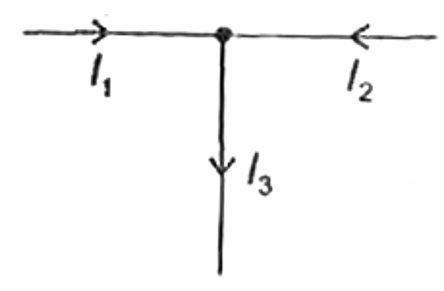Out of given four waves (1),(2),(3) and (4)
y=asin(kx+ωt) ..(1)
y=asin(ωt−kx) ..(2)
y=acos(kx+ωt) ..(3)
y=acos(ωt−kx) ..(4)
emitted by four different source S1,S2,S3 and S4 respectively, interference phenomena would be observed in space under appropriate conditions when
A
Source S1 emits wave (1) and S2 emits wave (2)
B
Source S3 emits wave (3) and S4 emits wave (4)
C
Source S2 emits wave (2) and S4 emits wave (4)
D
S4 emits waves (4) and S3 emits waves (3)
Video Solution
Text Solution
The correct Answer is:C
For interference, two waves must have a constant phase relationship Equation 1 and 3 and 2 and 4 have a constant phase relationship of π2 out of two choices. Only one S2 emitting 2 and S4 emitting 4 is given so only (c ) option is correct.
|
Topper's Solved these Questions
- WAVES AND ACOUSTICSBOOK - A2ZCHAPTER - WAVES AND ACOUSTICSEXERCISE - Beats
20 Videos
- WAVES AND ACOUSTICSBOOK - A2ZCHAPTER - WAVES AND ACOUSTICSEXERCISE - Stationary Waves
20 Videos
- WAVES AND ACOUSTICSBOOK - A2ZCHAPTER - WAVES AND ACOUSTICSEXERCISE - Equation And Energy Of Progressive Wave
16 Videos
- VECTORSBOOK - A2ZCHAPTER - VECTORSEXERCISE - Chapter Test
29 Videos
- WORK, ENERGY, POWER AND COLLISIONBOOK - A2ZCHAPTER - WORK, ENERGY, POWER AND COLLISIONEXERCISE - Chapter Test
29 Videos
Similar Questions
Knowledge Check
Two waves y1=asin(ωt−kx) and y2=acos(ωt−kx) superimpose at a point :
AThe resultant amplitude is √2aBIf l is the intensity of each source then Imax=2lCThe resultant wave leads y1 by a phase angle of π4DData insufficient to arrive at options (B) and ("C")Three waves y1,y2,y3 are given by y1=Asin(Kx−ωt),y2A=sin(Kx+ωt)andy3=Asin(Ky−ωt). Which one of the following represents wave ?
Ay1+y2+y3By1+y3Cy1+y2Dy2+y3Which two of the given transverse waves will give stationary waves then get superimposed?
z1=acos(kx−ωt) .(A)
z2=acos(kx−ωt) .(B)
z3=acos(ky−ωt) .(C )AAandBBAandCCBandCDany two
Two waves are given byy1=asin(ωt−kx) and y2=acos(ωt−kx). The phase difference between the two waves is
View SolutionWhich two of the following waves are in the same phase?
y=Asin(kx−ωt)
y=Asin(kx−ωt+π)
y=Asin(kx−ωt+π/2)
y=Asin(kx−ωt+2π)
View SolutionThe phase difference between the waves y=acos(ωt+kx)andy=asin(ωt+kx+π2) is
View SolutionTwo waves are given by y1=asin(ωt−kx) and y2=acos(ωt−kx). The phase difference between the two waves is -
View SolutionTwo waves of equation
y1=acos(ωt+kx)andy2=acos(ωt−kx) are superimposed upon each other. They will produce
View Solution

